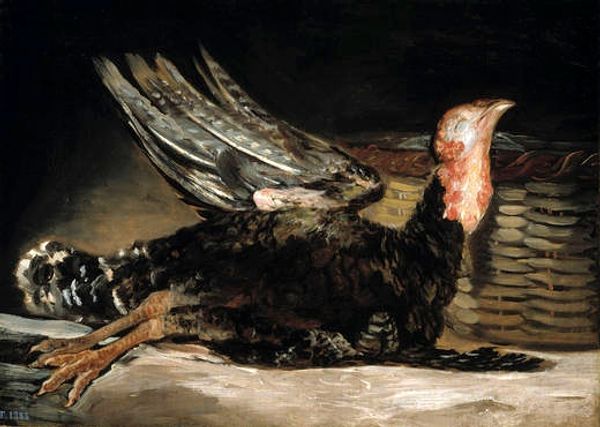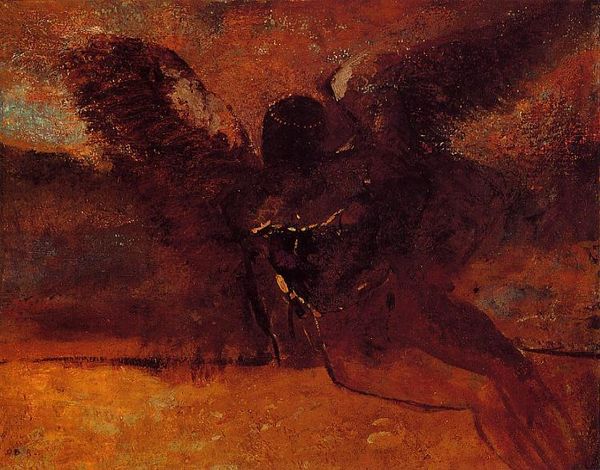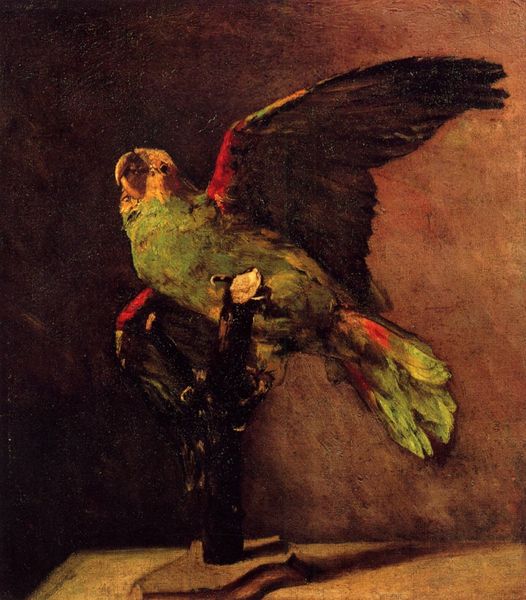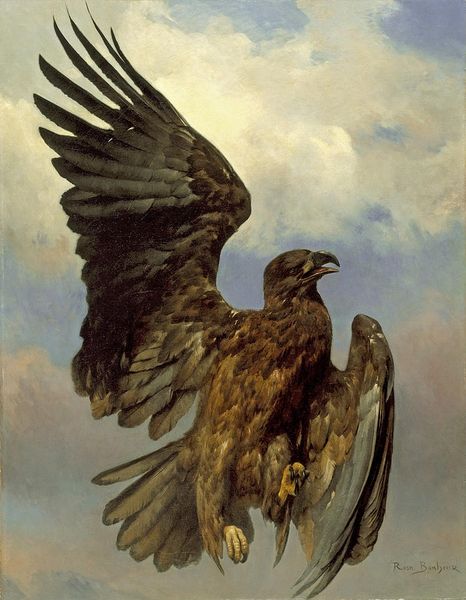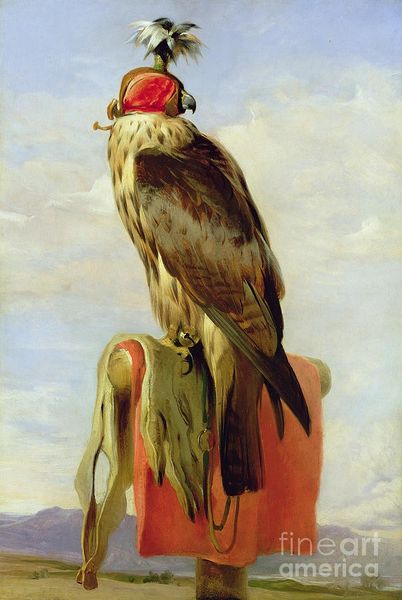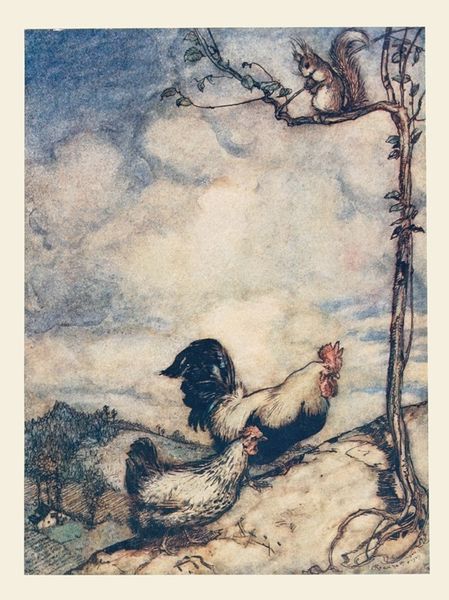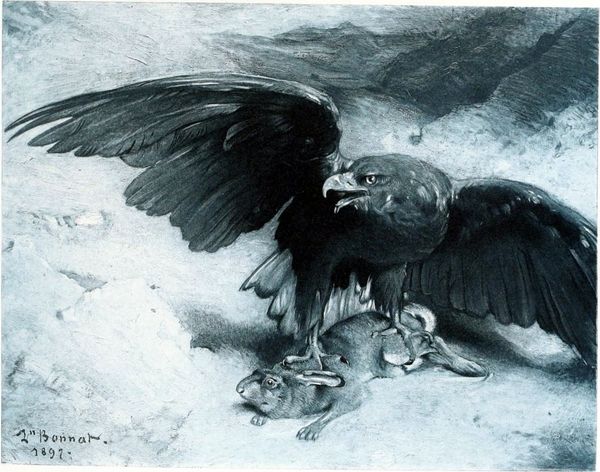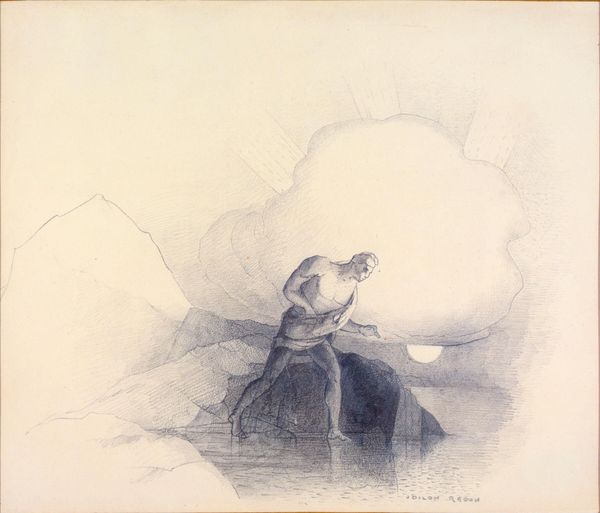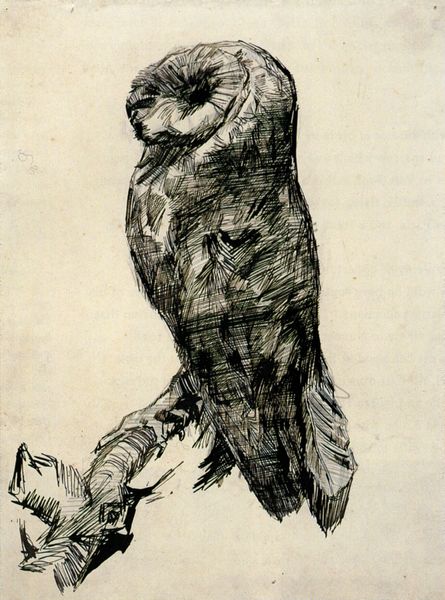
Copyright: Public domain
Editor: This is Tivadar Kosztka Csontvary's "Bird of Prey" from 1893, rendered in oil paint. The stark realism is quite striking, yet the overall composition has an unsettling mood to it. What formal qualities strike you most forcefully? Curator: It is interesting to observe how Csontvary employs a juxtaposition of textures. Note the rough impasto of the landscape against the smooth, almost delicate rendering of the bird's feathers. How do you interpret this contrast in surface treatment? Editor: I see what you mean! The way the light catches the textures emphasizes the distinction between the bird's stillness and the landscape's apparent volatility. Do you feel that color plays a role here, as well? Curator: Precisely. The subdued earth tones of the land provide a foundation that serves to amplify the vibrant hues of the bird of prey and its, presumably, freshly caught meal. Notice how the bright reds and browns focus your attention, almost violently, onto the painting's crux: predation. What do you take from that juxtaposition? Editor: It certainly forces us to confront nature's raw aspects within this pictorial space. I guess the formal properties are not just visually interesting but guide you toward certain interpretations as well! Curator: Exactly. By analysing the formal elements – line, color, texture, and composition – we unlock avenues for further understanding, not only about Csontvary’s approach to painting, but how visual forms produce knowledge and experience. Editor: Thanks. Looking at the work this way, it's like unlocking another level of understanding it. I hadn't considered the role of the paint texture itself so intently before. Curator: Indeed. Form contains meaning; it structures meaning, enabling greater understanding, providing intellectual enjoyment in addition to aesthetic pleasure.
Comments
No comments
Be the first to comment and join the conversation on the ultimate creative platform.

